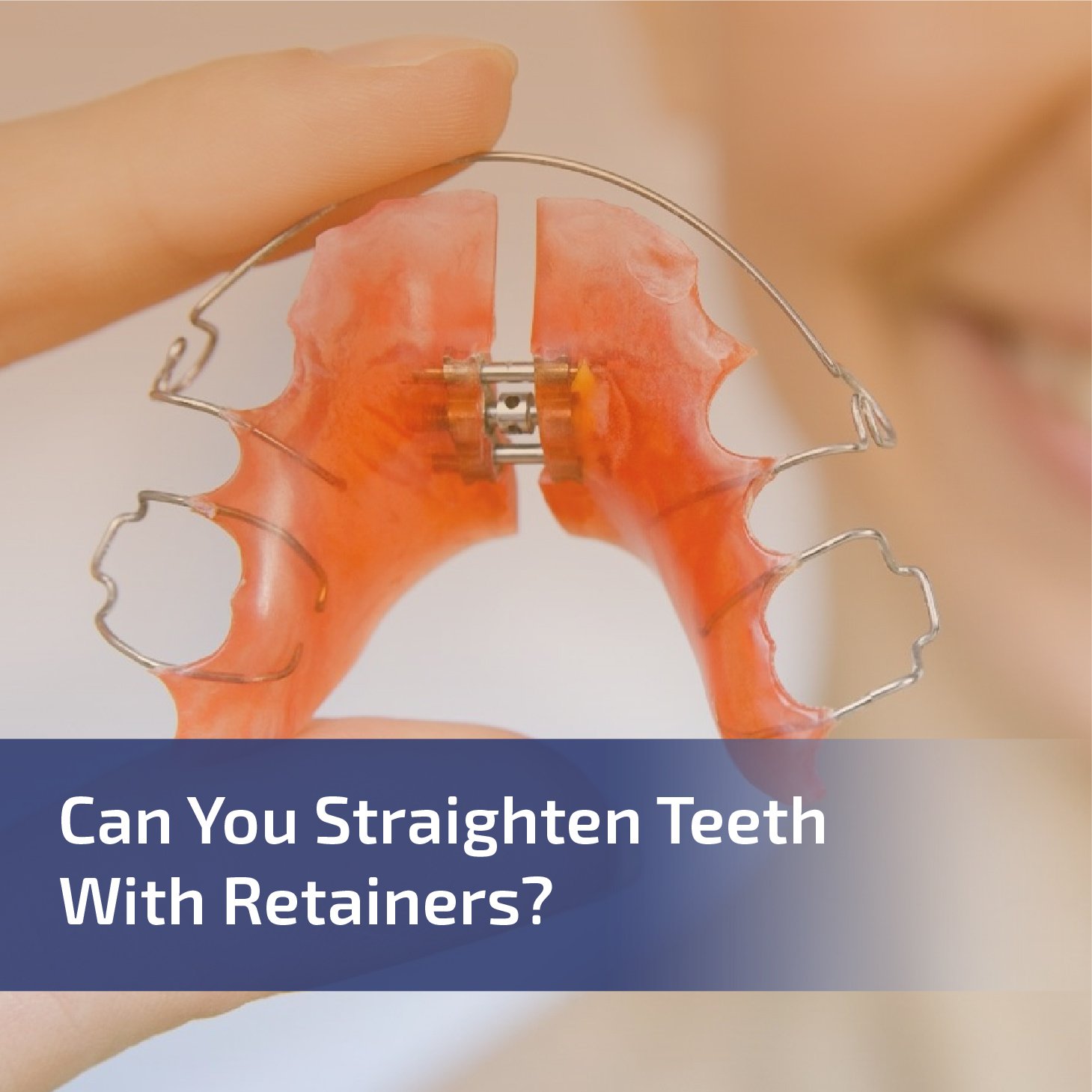
When it comes to achieving a straight and beautiful smile, many people explore different orthodontic treatments. One popular option that has gained attention is the use of retainers. Retainers are custom-made dental appliances that are primarily used to maintain the position of teeth after orthodontic treatment with braces.
In this comprehensive article, we will explore the effectiveness of using retainers for teeth straightening.Retainers are primarily designed to retain the current alignment of your teeth and prevent them from shifting back to their original positions. They are not typically intended for actively moving or straightening teeth. Therefore, if you have misaligned or crooked teeth and are looking to straighten them, retainers alone may not be the most effective solution.
The Role of Retainers in Orthodontic Treatment
Orthodontic treatment using braces or clear aligners is usually required to correct misaligned teeth or bite issues. These treatments apply gentle, controlled forces to gradually move the teeth into their desired positions. Once the active treatment phase is complete, retainers are prescribed to hold the teeth in their new positions, allowing the surrounding tissues to stabilize.
How Retainers Work
Retainers work by exerting pressure on the teeth, keeping them in their corrected positions. They are typically worn for a certain period each day, usually at night, to prevent the teeth from shifting. Retainers can be made from different materials, such as plastic or metal, and are customized to fit the individual’s mouth.
Pros of Using Retainers for Straightening
For those considering using retainers for teeth straightening, understanding the advantages is essential to set realistic expectations and ensure optimal results.
1. Less Noticeable:
Especially the clear types like Essix retainers, they are almost invisible, making them a preferred choice for adults and those conscious about aesthetics.
2. Comfort:
Retainers, particularly the clear ones, often lack the metal brackets and wires associated with traditional braces, making them more comfortable for the wearer.
3. Cost-Effective for Minor Adjustments:
For slight misalignments, retainers might offer a more affordable solution compared to other orthodontic treatments.
Cons of Using Retainers for Straightening
For those considering using retainers for teeth straightening, understanding the advantages and limitations is essential to set realistic expectations and ensure optimal results
1. Limited Correction Capability:
Retainers are primarily designed to maintain teeth positions post-braces or to correct very minor shifts. They aren’t suited for significant orthodontic adjustments.
2. Potential for Suboptimal Results:
For those with more pronounced misalignments, retainers might not deliver the desired straightening results.
3. Requires Discipline:
Unlike fixed braces, removable retainers require consistent wear to be effective. If not worn as advised, their efficacy decreases.
Proper Care and Maintenance of Retainers
To ensure the longevity and effectiveness of your retainer, proper care and maintenance are vital.
Cleaning:
Daily Cleaning:
Clean the retainer daily with a toothbrush and lukewarm water. Avoid hot water as it can warp the retainer.
Deep Cleaning:
Occasionally, soak the retainer in a denture or retainer cleaning solution to remove any built-up plaque or bacteria.
Avoid Harsh Chemicals:
Refrain from using abrasive toothpaste or alcohol-containing mouthwashes as they can damage the retainer.
Duration:
Regular Wear:
Follow the orthodontist’s recommendation on how long to wear the retainer daily. Initially, it might be 24/7, transitioning to only nighttime wear.
Consistency is Key:
Regular wear ensures the teeth remain in their desired position.
Replacement:
Wear and Tear:
Over time, retainers can become worn out or lose their shape. Inspect regularly for signs of wear.
Regular Check-ups:
Regular orthodontic check-ups will help determine when it’s time to replace your retainer.
Frequently Asked Questions
Q1. Can retainers fix minor teeth crowding?
Retainers can help prevent minor teeth crowding from worsening by maintaining the current alignment. However, they may not be able to resolve crowding issues on their own. In such cases, consulting an orthodontist is recommended to explore alternative treatment options.
Q2. How long should I wear my retainer?
The duration of retainer wear varies depending on the individual’s orthodontic treatment plan. Typically, retainers are initially worn full-time for a few months and then transitioned to nighttime wear. It is essential to follow your orthodontist’s instructions regarding retainer wear to ensure the best results.
Q3. Can retainers fix an overbite or underbite?
Retainers alone are generally not sufficient to correct significant bite issues like overbites or underbites. These conditions require comprehensive orthodontic treatment, which may involve braces, clear aligners, or other specialized appliances.
Q4. What should I do if my retainer feels tight?
If your retainer feels tight or uncomfortable, it may be a sign of teeth shifting. Contact your orthodontist promptly to assess the situation and determine if adjustments or a new retainer are necessary.
Q5. Can I stop wearing my retainer after some time?
Wearing a retainer for the recommended duration is crucial to maintain the results of your orthodontic treatment. Even after the active treatment phase is complete, your teeth can still shift overtime. Therefore, it is important to continue wearing your retainer as instructed by your orthodontist to ensure long-term stability and prevent any unwanted tooth movement.
Conclusion
While retainers are effective in maintaining the results of orthodontic treatment, they are not typically designed to straighten teeth on their own. If you have misaligned teeth and desire straightening, it is advisable to consult an orthodontist who can recommend the most suitable treatment options for your specific case. Remember to diligently wear and care for your retainer as instructed to preserve the beautiful smile you have achieved through orthodontic treatment.